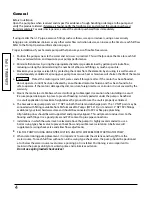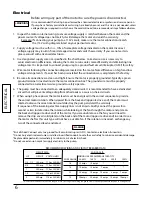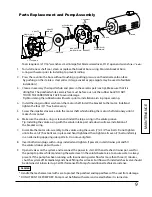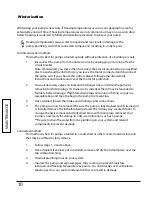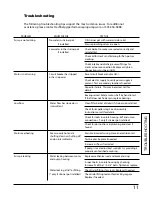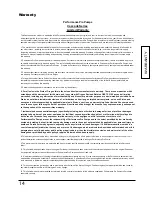
3
Understanding priming and pump operation
Your pump is powered by an electric motor that directly affects your water flow rate. When the electric motor
is turned on it utilizes centrifugal force to generate velocity of the water. The water then flows into the
optional strainer pot if installed to filter out debris or if not, will flow directly into the pump housing. Water
continues its flow into the eye of the impeller where the water meets the impeller vanes and converts kinetic
energy into static pressure allowing the pump to maintain pressure and is then forced out of the pumps
discharge port resulting in continuous water flow for your waterscape oasis.
The Cascade High RPM pump is not a self-priming pump which makes it best suited for flooded suction
systems. This means that it is designed to best operate below the water source surface level. Because the
Cascade is not self priming it is recommended to install a rubber flapper type swing check valve and a priming
pot to assist in priming unless it is on a gravity fed system. It is important to note that operating above the
water source surface level may negatively affect the pumps overall performance. After filling the pump
housing, intake pipe and priming pot (if present) with water and starting the pump, if there is no water in the
intake pipe between the swing check valve and the water source, a reduced flow may be noticed for a minute.
This is normal and will increase to full performance within a few minutes as long there are no obstructions or
air leaks. If after a few minutes, full flow is not achieved, shut the pump off and check connections.
Never use a spring loaded check valve as it will reduce or stop flow.
What to expect for priming cycle
with
swing check valve installed.
Essentially, when utilizing a properly installed swing check valve the priming process is less time consuming
and is more efficient. An optional priming pot is also helpful. When installing a swing check valve, be sure your
connections are properly seated and are airtight. The valve should be as low and as close to your source water
as possible to maintain constant pressure. The best installation location for a check valve is underwater when
possible, as this can provide an air tight fit even without PVC adhesive. Some swing check valves have true
union connection fittings that offer easier access for cleaning when needed. The pump housing, intake pipe
and strainer pot (if present) are then filled with water until the intake pipe is full. Secure fittings tightly and
turn on your pump. With the swing check valve in place, your pump is fully primed. However, if after running
your pump you observe the water level decreasing continuously, this indicates there is either a blockage
limiting the flow or a union fitting connection on the intake pipe is not airtight. Check all
connections for debris, crimping, or cracking and tighten or replace parts as needed.
What to expect for priming cycle
without
a swing check valve installed.
In installation applications where no swing check valve is installed, it is important to install a priming pot to
facilitate priming. The Cascade series is designed to operate as gravity fed or with a swing check valve and
priming pot installed. Without any of these factors in place, the system will not function properly. If working
with an installed priming pot, the lid should be removed, priming pot filled with water, lid replaced
ensuring all fittings are tight and sealed with PTFE paste or similar sealant.
Do Not use PTFE tape.
Be sure all water supply valves are open, then connect the power supply to start the pump. It is important to
note that the resulting water flow may initially be very little for the first few minutes. If at anytime, no water is
flowing into the priming pot, the pump should be shut off, threaded fittings and unions rechecked, water
refilled and system restarted. If the problem persists, contact technical support.
Essentially, the Cascade will not have a prime cycle; however, the needs of the system will vary slightly based
on pipe type, diameter, suction lift height, horizontal distance, motor speed and horsepower. A check valve
and a priming pot are excellent tools to aid in the ease of operation of a Cascade pump.
For system specific assessments including suction lift and friction loss guidance and operating questions,
please call 503-356-5888 or email [email protected].
PUMP
OPERA
TION
The Basics
The Prime
With Valve
No Valve
Содержание Cascade Series
Страница 13: ...Performance Data 13 PERFORM ANCE ...




